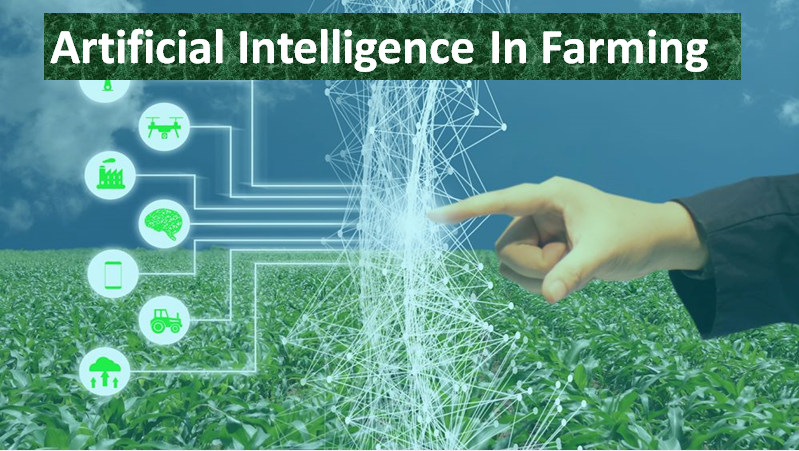
Artificial Intelligence in Farming
Artificial Intelligence
A machine with the ability to perform cognitive functions for example, perceiving, learning, reasoning and solve problems are deemed to hold an artificial intelligence.
Artificial intelligence occurs when a machine has intellectual ability. The standard for AI is the human level concerning reasoning, speech, and vision.
Artificial intelligence is having a tremendous effect in all areas of the business. Each industry hoping to computerize certain positions using intelligent machinery.
Farming and Agriculture are one of the most seasoned and most significant professions on the planet. It plays a significant part in the financial area. Around the world, agribusiness is a $5 trillion industry.
The worldwide population is expected upon to arrive at in excess of nine billion by 2050 which will require an expansion in farming creation by 70% to satisfy the interest. As the total populace is expanding because of which land water and assets getting lacking to proceed with the demand-supply chain. Along these lines, we need a smarter approach and become more effective about how we cultivate and can be productive.
This article covers what are challenges faced by farmers by utilizing traditional strategies of farming and how Artificial Intelligence is making a transformation in agriculture by replacing traditional methods by using more proficient methods and helping the world to become a better place.
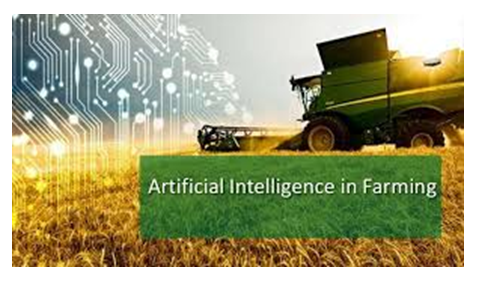
Lifecycle of Agriculture
We can divide the Process of Agriculture into diverse parts:
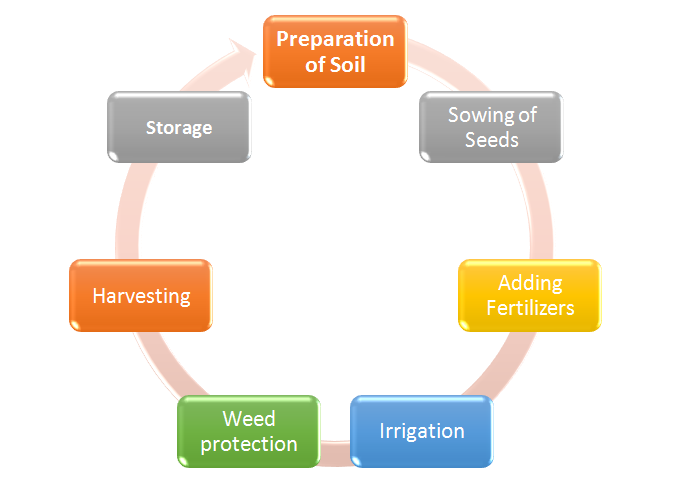
Challenges faced by farmers by using traditional techniques of farming
Below are few lists of general challenges that exist in the agricultural domain.
- In cultivating climatic factors such as rainfall, temperature and humidity play a significant role in the agribusiness lifecycle. Expanding deforestation and contamination bring about climatic changes, so it’s hard for farmers to take choices to set up the soil, sow seeds, and harvest.
- Every crop needs specific nutrition in the soil. There are 3 main nutrients nitrogen(N), phosphorous(P) and potassium(K) essential in soil. The lack of nutrients can lead to poor quality of crops.
- From agriculture lifecycle that weed protection plays a significant role. If not controlled it can lead to an increase in production cost and furthermore it absorbs nutrients from the soil which can cause nutrition deficiency in the soil.
Benefits of Artificial Intelligence in Agriculture and Farming
- In the Agriculture Market, AI technology has been segmented for water necessities through auto-irrigation.
- It likewise gives the signal to farmers through to manage robotics, crop, soil management, and animal farming.
- AI’s computer vision technology can assist farmers to analyze soil and yield conditions, leading to the generation of actionable insights. The blend of deep learning and computer vision can altogether increase agricultural productivity by recording analytics such as weather conditions, plant growth, temperature, the shelf life of crops, gaseous content, and more.
- AI makes it effectively manage the demand and supply of the market, crop seriousness, and regional crop planning and storing it without any problem.
Applications of Artificial Intelligence in Agriculture
Factors, for example, climate change, population growth and food security concerns have moved the business into looking for more creative ways to deal with ensuring and improving harvest yield. Thus, AI is consistently rising as a component of the business’ innovative development. This assistance yields more advantageous crops, control pests, monitor soil, and developing conditions, arrange data for farmers, help with the outstanding burden, and improve a wide scope of horticulture related tasks in the whole food supply chain.
Crop and Soil Health Monitoring
Type of soil and nutrition of soil plays a vital role in the kind of crop is grown and the quality of the yield. Because of increasing, deforestation soil quality is corrupting and it’s difficult to determine the quality of the soil.
A German-based tech start-up PEAT has built an AI-based application called Plantix that can recognize the nutrient insufficiencies in soil including plant pests and diseases by which farmers can also get a plan to use fertilizer which assists to improve harvest quality. This app utilizes image recognition-based technology. The farmer can capture pictures of plants using smartphones and can see soil restoration techniques with tips and different solutions through short videos on this application.
Likewise, California based Trace Genomics is another machine learning-based organization that helps farmers to do a soil analysis to farmers.
Use of weather forecasting
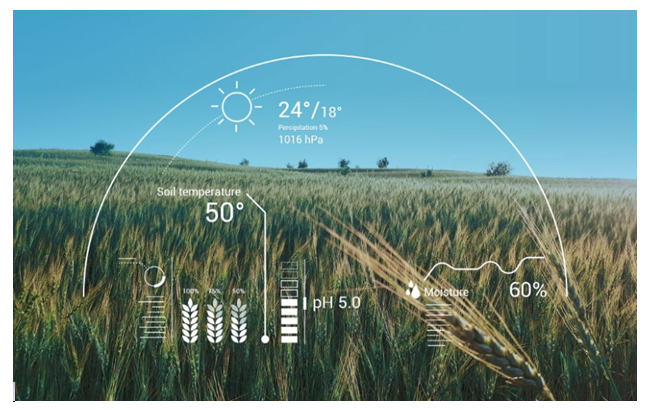
With the change in climatic condition and increasing pollution it’s hard for farmers to determine the right time for planting seed, with help of Artificial Intelligence farmers can examine weather conditions by utilizing weather forecasting which helps them plan the type of crop can be grown and when should seeds be planted.
Analyzing crop health by drones
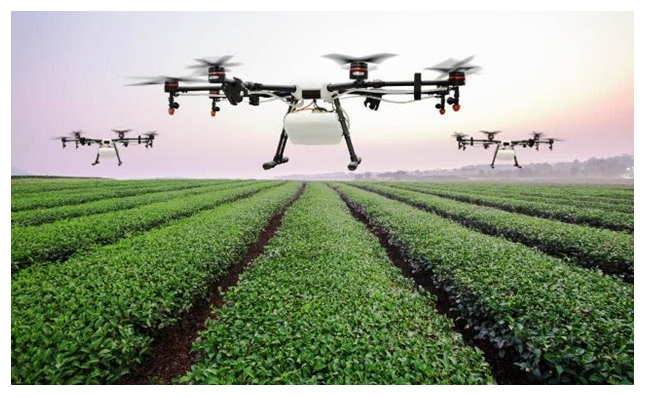
SkySqurrel Technologies has brought drone-based Ariel imaging solutions for checking crop wellbeing. In this procedure, the drone catches data from fields and afterward information is moved by means of a USB drive from the drone to a PC and investigated by specialists.
This organization utilizes algorithms to investigate the caught images and give a detailed report containing the current health of the form. It encourages the farmer to distinguish pests and microscopic organisms helping farmers to ideal utilization of pest control and different strategies to make required action.
Precision Farming and Predictive Analytics
Artificial intelligence applications in horticulture have created applications and instruments which help farmers incorrect and controlled cultivating by giving them legitimate direction to farmers about water the executives, crop turn, ideal collecting, kind of harvest to be developed, ideal planting, pest attacks, nutrition management.
While utilizing the AI algorithms regarding pictures caught by satellites and drones, AI-empowered innovations anticipate climate conditions, break down yield supportability and assess farms for the presence of diseases or pests and helpless plant nourishment on farms with data like temperature, precipitation, wind speed, and solar radiation.
Farmers without network can get AI benefits at this moment, with devices as straightforward as a SMS-empowered telephone and the Sowing App. Then, farmers with Wi-Fi access can utilize AI applications to get a continually AI-tweaked plan for their lands. With such IoT-and AI-driven arrangements, farmers can address the world’s issues for expanded food sustainably developing production and incomes without draining valuable natural resources.
In near future, AI will help farmers progress into agricultural technologists, using data to optimize yields down to individual rows of plants
Agricultural Robotics
Companies are building and programming autonomous robots to handle essential agricultural tasks like harvesting crops at a higher volume and faster pace than human workers.
AI-enabled system to detect pests
Pests are one of the exceedingly awful foes of the farmers which harms crops.
AI systems use satellite images and compare them with historical data using AI algorithms and identify that if any insect has landed and which kind of insect has landed like the locust, grasshopper, etc. And send alerts to farmers to their smartphones so farmers can take safe precautions and use required pest control thus AI helps farmers to battle against pests.
As an end notes Artificial Intelligence in agriculture helping farmers to mechanize their farming but also shifts to exact cultivation for higher crop yield and better quality while using lesser resources.



